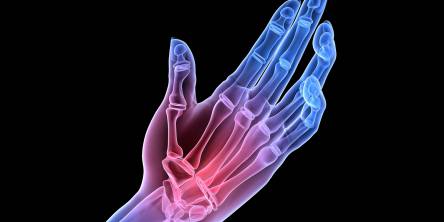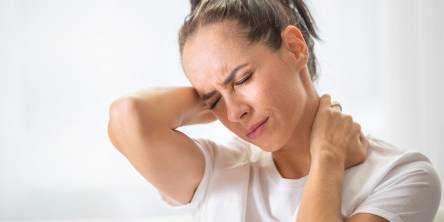5 Common Causes of Leg Swelling and How to Manage Them

Swelling is a common issue that can strike anyone. Occasional leg swelling may occur after a long day on your feet or from sitting too long. However, if your legs are regularly swollen, it could indicate a serious underlying condition. Swelling can cause leg pain, loss of sensation, redness, and itching. If left unmanaged, it can lead to stiffness and difficulty walking.
It’s important to identify the root cause to manage swelling. Here are some common reasons for leg swelling and their treatments:
1. Arthritis
Arthritis involves several conditions that cause pain and inflammation of the joints. The most common types are osteoarthritis and rheumatoid arthritis. These conditions, despite their different causes, both lead to inflammation and can result in leg swelling. If left untreated, the inflammation and swelling can worsen, potentially causing joint deformity.
Managing arthritis is crucial to relieve swelling and improve quality of life. Heat and cold therapy can provide temporary relief from pain and swelling. A doctor might recommend physical therapy for long-term relief. Over-the-counter or prescription medications can also help manage pain and inflammation. In severe cases, surgery might be necessary.
2. Congestive heart failure
Congestive heart failure occurs when the heart cannot pump enough blood to meet the body's needs, leading to fluid accumulation, especially in the lower limbs and abdomen. Other symptoms include congested lungs, fatigue, irregular heartbeat, and dizziness.
Treatments range from lifestyle changes (diet, regular exercise, stress management) to medications that help the heart work more efficiently. In some cases, more invasive treatments like surgery or implanted devices might be needed. Managing fluid intake and using diuretics can help reduce swelling.
3. Kidney failure
The kidneys filter excess fluid and waste from the blood, eliminating them through urine. Kidney failure results in the buildup of waste and fluid in the body, causing edema in the feet and ankles. Other symptoms include nausea, chest pain, high blood pressure, and nerve damage.
While there's no cure for kidney disease, treatments focus on relieving symptoms and slowing progression. Medications, lifestyle changes, and dietary adjustments are commonly recommended. In severe cases, dialysis or a kidney transplant may be necessary to manage the condition and reduce swelling.
4. Deep vein thrombosis (DVT)
Deep vein thrombosis is a condition where clots form in one or more veins of the leg. This is a serious issue because clots can break loose and travel to other parts of the body, potentially causing life-threatening complications. Clots in the leg veins can disrupt normal blood flow, leading to leg swelling, pain, skin discoloration, and warmth.
Treatment typically includes blood thinners to prevent clots from growing or new ones from forming. In some cases, thrombolytics (clot dissolvers) might be used. Compression stockings can help reduce swelling and prevent complications. Lifestyle changes, such as increasing physical activity and avoiding prolonged periods of immobility, are also important.
5. Cellulitis
Cellulitis is a serious bacterial skin infection. Affected areas become swollen, inflamed, painful, and warm to the touch. This infection often affects the lower legs. If untreated, cellulitis can spread to the bloodstream and become life-threatening, causing complications like damage to the lymphatic drainage system and chronic swelling.
The primary treatment for cellulitis is antibiotics, which typically need to be taken for 5-10 days. Elevating the affected leg can help reduce swelling and speed up recovery. In severe cases, hospitalization may be required for intravenous antibiotics.
Additional Tips for Managing Leg Swelling
In addition to treating the underlying cause, there are general measures that can help manage leg swelling:
- Elevate Your Legs: When sitting or lying down, try to keep your legs elevated above the level of your heart to reduce swelling.
- Compression Stockings: Wearing compression stockings can help improve circulation and reduce swelling.
- Exercise Regularly: Regular physical activity promotes good circulation and can help prevent swelling.
- Stay Hydrated: Drinking plenty of water helps maintain good kidney function and prevent fluid retention.
- Limit Salt Intake: Reducing salt in your diet can help prevent fluid retention and swelling.
Similar Articles
Veins on the skin that produce swelling may indicate varicose veins. Varicose veins are a vein disorder, and their role is to return blood from the leg to the heart. The specific cause of varicose veins, a prevalent condition, is unknown.
A healthy spine is the foundation of a functioning body. It supports your frame while allowing you to bend, flex, and move more freely. However, most people neglect the importance of spine health until they have a back condition.
Whether you're having trouble moving body parts or experiencing worsening joint discomfort, an orthopedic doctor can help. They can treat anything from a minor strain to complex treatments such as shoulder replacement. The appropriate treatment from an orthopedic expert at the right time might relieve your pain and improve your symptoms in less time.
When it comes to trauma, professionals in the mental health sector readily admit that no single style of therapy or intervention is appropriate for every case or individual.
Rheumatoid arthritis (RA) is a type of autoimmune disease that occurs when the body's immune system attacks the lining of joints, causing inflammation and causing symptoms like pain and stiffness. RA usually affects both sides of the body in a similar way, but small joints of the hands and feet are often affected first, often knuckle joints of the fingers.
An electroencephalogram (EEG) is a test that measures the electrical activity in the brain. Healthcare experts utilize it to evaluate and comprehend neurological illnesses, sleep disorders, and brain damage.
So, your back decided to stage a mutiny and gift you with a herniated disc. Lovely. Now what? If you’re imagining a future filled with endless discomfort and groaning every time you get out of bed, don’t fret. There are plenty of ways to tackle a herniated disc and get back to living your best, pain-free life.
Back pain – it’s not just a matter of “I lifted a heavy box, and now my back hurts.” It’s often the result of a complex dance between our minds and bodies, with stress, anxiety, and emotions playing lead roles. If you’ve ever woken up with a stiff back after a tough week or felt your spine twinge just from reading a long email chain, you’re not alone.
Chronic pain is a medical problem that affects many people around the world. Unlike acute pain, which is a short-term response of the body to tissue damage, chronic pain lasts longer, often without obvious physical damage. It can last from several months to several years, and its consequences can affect all aspects of a person's life









